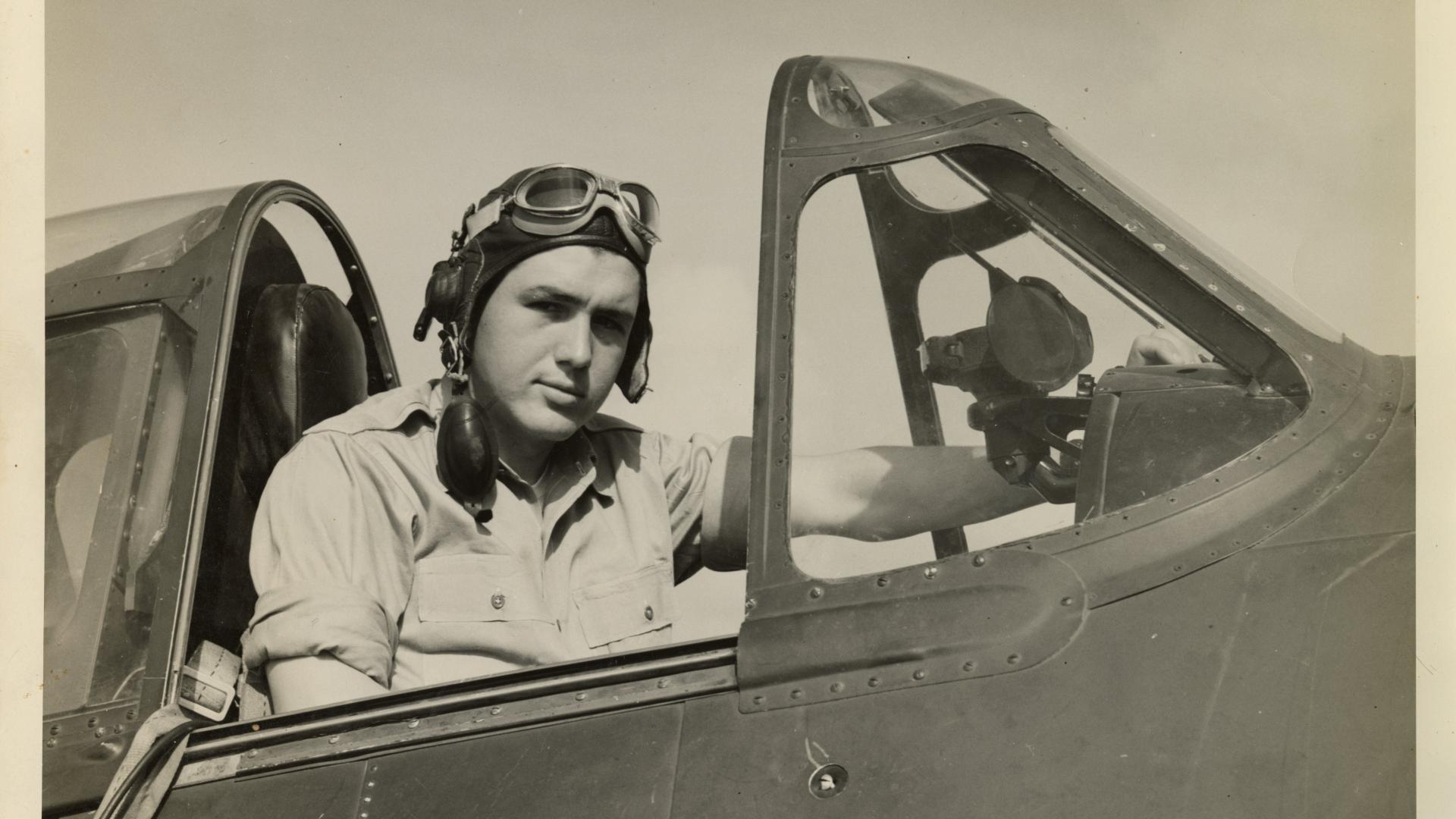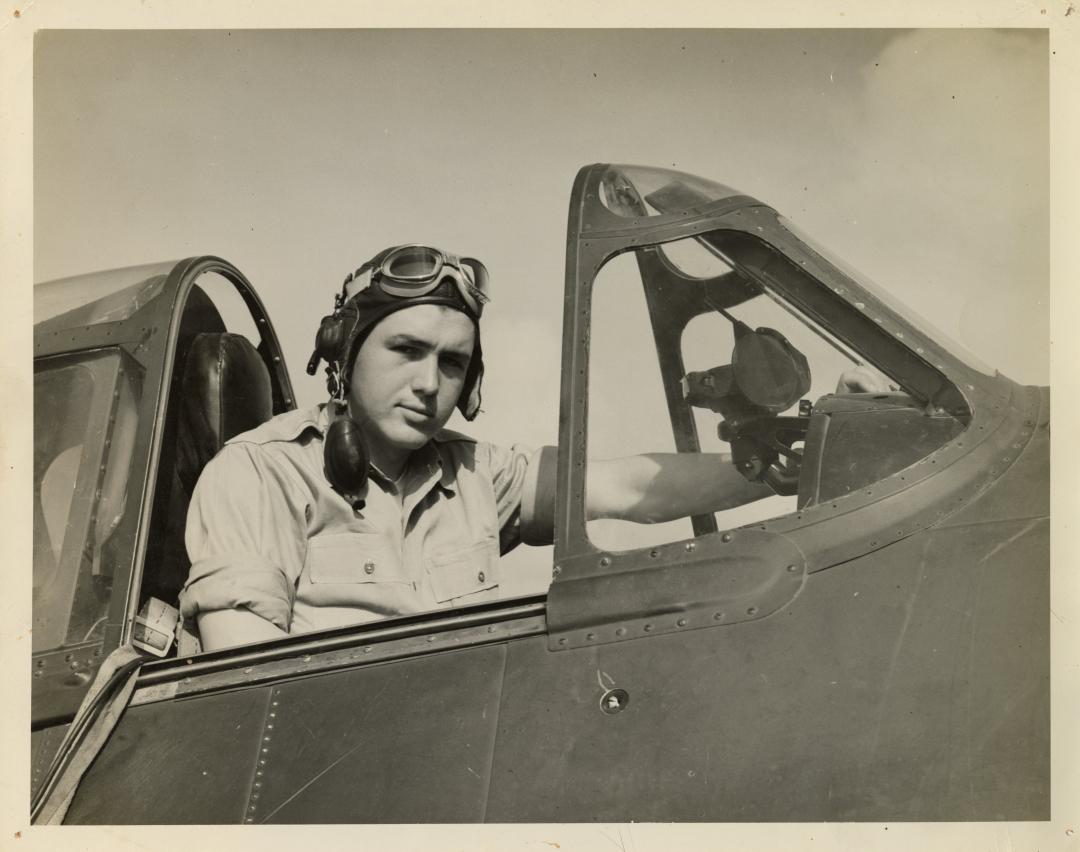When we examine the history of the USS Yorktown (CV-10) we find the stories of men who risked their well-being and lives in defense of the United States. The tales of their accolades and accomplishments have filled books and movie screens, with plenty of stories still waiting to be told. One of the first narratives to come out about CV-10 during World War II was that of Elisha Terrill “Smokey” Stover. At just 24 years old the young pilot became a central figure in the film The Fighting Lady, a documentary filmed aboard CV-10 during her first wartime cruise which began in the midst of the Second World War. The film concludes by noting that several of the young men featured throughout the story did not return from combat, including “That Fightingest Gentleman,” Smokey Stover. It closes with a message that new sailors stand ready to fill the shoes of the brave and gallant men who were lost. Smokey Stover and the other sailors lost during that first cruise helped establish a standard aboard the USS Yorktown and they left a legacy that endured beyond the Yorktown’s active military service. As his friend and fellow Yorktowner James “Jim” Bryan recalled, “During the remainder of the [war] whenever any of us felt lazy or down in the mouth, all we had to do was think of Smokey…and realize what Smokey had sacrificed, and it would snap you out with a jar.”

Image of Elisha "Smokey" Stover just before his deployment.
Elisha Terrill “Smokey” Stover was born on February 9, 1920, to James and Stella Stover in Dallas, Texas. Before Smokey ever set foot aboard the USS Yorktown (CV-10), he was already a battle proven naval aviator. He spent the first part of his military career participating in two of the most pivotal battles of the Pacific theater, the Battle of Midway and the Battle of Guadalcanal, as part of Fighting Squadron Five (VF-5). Over Guadalcanal, Smokey put together an impressive combat record and gained four confirmed victories over Japanese pilots, one short of becoming an ace. Smokey had steadily improved his flying over the course of the war after an admittedly shaky start. When asked how many planes he had destroyed, he would reply, “Four Japanese, and six American!” referring to his own planes badly damaged in combat or during landings. Smokey’s experiences are indicative of an entire generation of Americans who joined the Navy in the lead up to the Second World War, and whose skills were now being tested in combat.
Following his successes over Guadalcanal, Smokey would be rotated out of combat with his squadron for some well-deserved rest stateside After, Smokey was sent to fighter director control school at Naval Air Station Norfolk— a clear sign that Smokey’s time as a fighter pilot was over, and the Navy was shifting him out of the cockpit and into the combat information center. The Navy valued experienced pilots, so Smokey and his squadron would be split up as the veteran pilots would be placed in support roles instead of flying combat missions. Smokey’s next assignment would be aboard the USS Yorktown (CV-10) still under construction. As luck would have it, the first fighter squadron aboard the Yorktown would be the new VF-5.
Today, the Smokey Stover Theater aboard the USS Yorktown stands as a tribute to his courage and the spirit of those who served beside him—ensuring his legacy lives on for future generations. Stay tuned for Part 2 as we continue to explore the story behind this remarkable hero.

